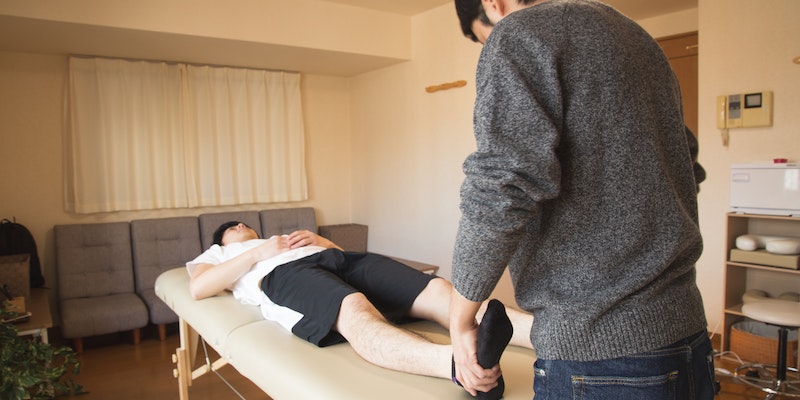Approaches to PTSD: Understanding Treatment Options
Oct 01, 2023
Traumatic events can cause Post Traumatic Stress Disorder, a cognitive disorder. It completely changes a person's life, causing medical and mental concerns. After a concussion, PTSD can induce uncomfortable symptoms that reduce the quality of life. PTSD management requires a multifaceted approach, including medications. PTSD treatment research is improving to meet individual needs.
The Basics of PTSD
PTSD disrupts the average balance of neurotransmitters, causing alterations in how individuals process threats. These changes can lead to an easily triggered "fight or flight" response, making individuals feel constantly on edge.
Triggering of the "Fight or Flight" Response
This heightened state of arousal and sensitivity is characteristic of PTSD. The "fight or flight" response becomes more readily activated, even in situations that are not objectively threatening. This can manifest in symptoms such as insomnia, flashbacks, and heightened startle responses, complicating the daily lives of those affected.
Range of Traumatic Events Leading to PTSD
PTSD can result from traumatic events, from combat experiences to natural disasters, accidents, or personal assaults. Everyone reacts differently, so what causes PTSD in one may not be in another. Thus, PTSD diagnosis and treatment must be customized.
Psychotherapeutic Approaches

Various Psychotherapeutic Approaches are considered during this process. The majority of them are stated under:
Cognitive Behavioral Therapy (CBT)
CBT stands as a cornerstone in the treatment of Pof. It operates on the principle of modifying detrimental thought patterns, thereby addressing the symptoms of PTSD. Patients learn to identify and challenge their harmful thoughts and develop coping mechanisms, significantly improving their quality of life.
Cognitive Processing Therapy (CPT)
CPT, a specialized form of CBT, involves a 12-week course where individuals learn to reinterpret and reframe their traumatic experiences. By focusing on the impact of their thoughts related to the traumatic event, individuals gain new perspectives, aiding in their recovery process.
Prolonged Exposure Therapy (PET)
Through sessions, trauma memories and triggers are gradually revealed. The systematic approach has shown promise in treating PTSD.
Eye Movement Desensitization and Reprocessing (EMDR)
EMDR offers a unique approach to treatment for PTSD. Unlike other therapies, individuals might not have to discuss their trauma in detail. Instead, they focus on it while engaging in external stimuli, helping to reprocess the traumatic memory.
Stress Inoculation Training (SIT)
Focusing on stress management, SIT provides individuals with practical skills to cope with stress. Techniques such as breathing exercises and muscle relaxation are taught, empowering individuals to manage their symptoms more effectively.
Medication Strategies for PTSD Management
To regulate neurotransmitters, lessen symptoms, and improve quality of life, PTSD patients need drugs. FDA-approved Paroxetine and Sertraline are routinely administered with off-label medications.
Exploration of Different Medications
PTSD drugs address anxiety, nightmares, and flashbacks. The primary classes are serotonin and norepinephrine-targeting SSRIs and SNRIs. PTSD drugs, including Fluoxetine, Paroxetine, Sertraline, and Venlafaxine, balance chemicals and lessen fight-or-flight.
Off-label Medication Utilization
Medication reactions vary, requiring a customized approach. Doctors may prescribe off-label PTSD medications that work. Antidepressants, MAOIs, Antipsychotics, Beta-blockers, and Benzodiazepines are included. These medications address diverse symptoms, contributing to a comprehensive treatment strategy.
Monitoring and Side Effects
The journey with medications is intricate, requiring careful monitoring to ascertain the correct dosage and manage potential side effects. Regular medical tests and consistent communication with healthcare providers are essential, ensuring the medication aligns with individual health profiles and addressing any arising concerns promptly.
Complementary Role of Medication
While medications are integral but most effective in a broader treatment plan, they work in tandem with therapies and lifestyle changes, providing a supportive role in managing symptoms and improving daily functioning for those undergoing treatment for PTSD.
Incorporating Complementary Approaches
Integrating mind-body techniques enhances the multifaceted approach to treating PTSD. Techniques like yoga, meditation, and mindfulness are instrumental in managing stress, fostering emotional well-being, and enriching the lives of those grappling with PTSD. These practices promote present-moment awareness and are vital components in the therapeutic journey.
Utilization of Biofeedback and Neurofeedback
Biofeedback and neurofeedback are innovative techniques that enable individuals to control physiological functions, contributing to symptom reduction. These techniques provide real-time feedback on various processes and brain activity, empowering individuals to modulate their responses and achieve balance.
Therapeutic Potential of Art and Music
Art and music therapy present alternative avenues for expression and coping. They offer creative outlets for exploring traumatic experiences, aiding in the process of healing and self-discovery. These therapies are particularly valuable for those seeking non-verbal modes of expression and have shown promising results in reducing anxiety and improving mood.
Exploring Acupuncture and Massage Therapy
Acupuncture and massage therapy have garnered attention for their stress-alleviating and relaxation-inducing properties. These therapies are gaining recognition in the medical community for their potential to support individuals in their journey with PTSD, promoting relaxation and overall well-being.
Challenges and Future Directions in PTSD Treatment

A significant challenge in PTSD diagnosis and treatment is the substantial variability in how individuals respond to treatments. Personalized treatment plans must address each individual's unique needs and symptoms.
Ongoing Research and Development of New Therapies
Pursuing more effective medications for PTSD and innovative therapeutic approaches continues to be a focus in the medical community. PTSD research seeks to understand its mechanisms and develop targeted treatments. Clinical Trials and Clinical Trials and Studies: Many clinical trials and studies are testing new PTSD medications and therapies.
Personalized Medicine: Genetics and neuroscience enable personalized medicine to treat PTSD based on the patient's genetics and brain chemistry.
Stigma and Barriers to Seeking Treatment
The stigma surrounding mental health conditions prevents many from seeking PTSD treatment. More people can get help by raising awareness and lowering stigma.
- Public Awareness Campaigns: PTSD and treatment awareness campaigns reduce stigma and encourage treatment.
- Access to Mental Health Services: Addressing this challenge requires improving access to mental health services and supporting PTSD patients.
Integrating Technology in Treatment
The integration of technology in the treatment of PTSD holds promising potential. Telehealth services, mobile apps, and online resources can enhance accessibility and provide additional support to individuals undergoing treatment for PTSD.
Telehealth Services
Virtual appointments and consultations can make it easier for individuals to access mental health services, especially those in remote areas.
Mobile Apps and Online Resources
These tools can offer support, resources, and self-help strategies for managing PTSD symptoms, complementing traditional treatment approaches.





